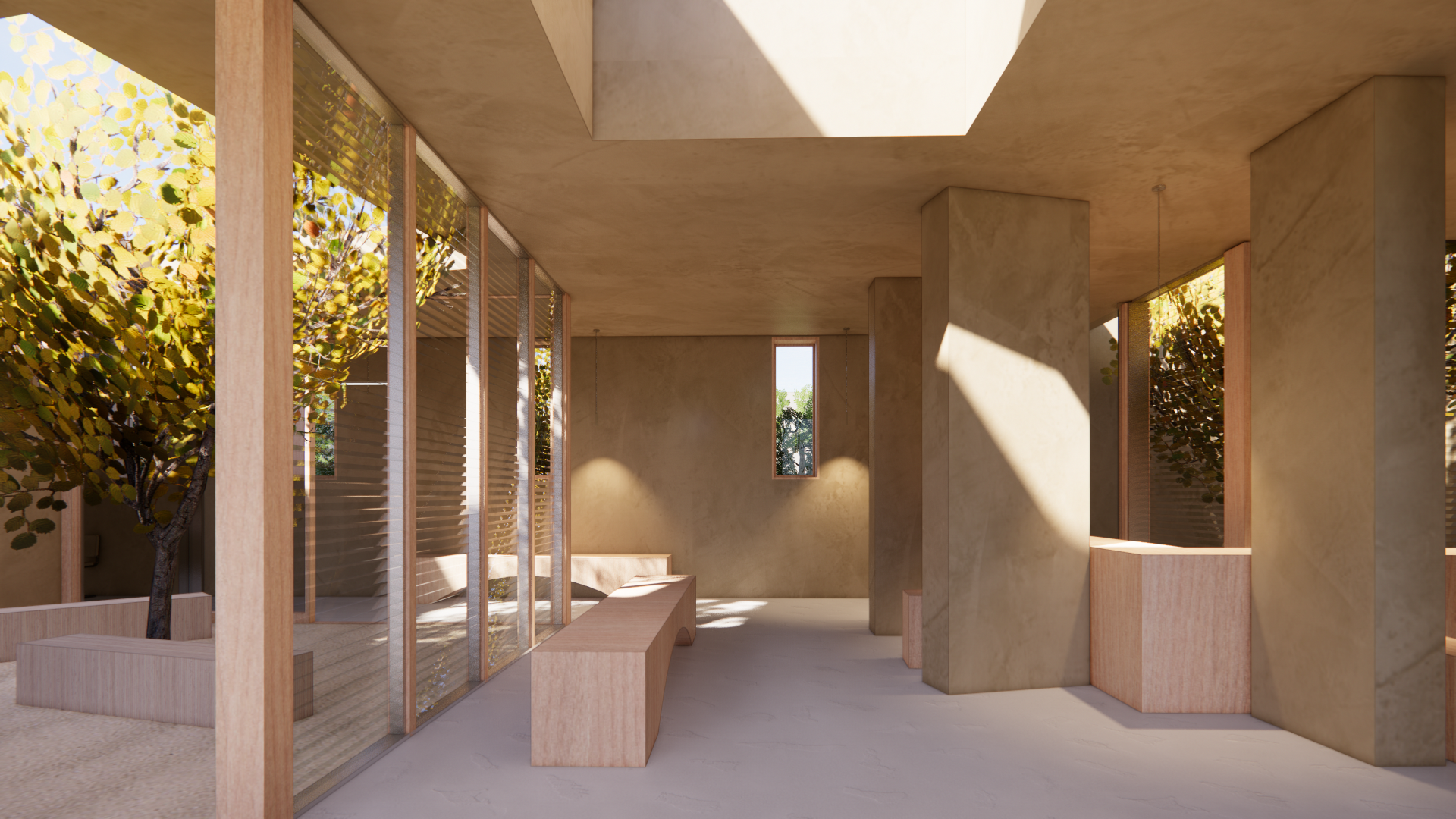Healing Atrium
Opioid Clinic, Venice, CA
The competition Emotions, Architecture, Opioids seeks to explore the emotional impact of architecture: how the built environment allows one to feel or perceive in certain ways – similar to art or music.
The Healing Atrium seeks to invite the visitor into a timeless space that feels more chapel than clinic, more comfort and acceptance than stigma, and more revitilization than rehabilitation.
Research finds that the most effective treatments for substance use disorders are those that take a multidimensional, holistic approach to treatment, and consider patients’ biological, social, environmental, as well as mental health, needs and challenges. The proposed healing clinic works in the service of providing such a comprehensive approach to treating ‘the whole person’, by creating a place of wellness that conducts sensory, experiential, emotional and practical collectedness and calm.
The Healing Atrium is a place free of judgement, and full of hope. Neoclassical columns, a bamboo stream, and elevated planting surround the built space, and establish a sense of tranquility, privacy, and spatial abundance, for anticipating patients and passersby alike. Stepping down, patients are welcomed into a gently cavernous domus. Aflood with well-cultivated light, natural and forged, and in the umbrage of interior trees, the entering patient enjoys a wealth of seating opportunities, on which to sit and absorb the jalousie-streamed breeze, awaiting treatment or consultation.
Visitors to the clinic are given not only the pharmacological therapy that they critically need, but also, and arguably just as importantly, the time and the space for contemplative surrender. The drudgery and depersonalization of waiting one’s turn for treatment becomes an experience of refuge and repose, and a time for contemplation, when surrounded by carefully considered, dignifying architecture. The quotidien ritual of taking one’s methadone dose becomes a private, reflective, and beautiful moment, when taken before a sunkissed courtyard space, taking in the sky and fluttering tree leaves alongside medication. The egress back onto busy streets and the demands of life encourages one final, savoring contemplation, drawing clients into an atrium courtyard, through a sandy trellised path of ribboned shadow and light, and up a brief but powerful ascension of steps, emerging, anew.
![]()
Opioid Clinic, Venice, CA
Competition Entry, Shortlisted Proposal.
The competition Emotions, Architecture, Opioids seeks to explore the emotional impact of architecture: how the built environment allows one to feel or perceive in certain ways – similar to art or music.
The Healing Atrium seeks to invite the visitor into a timeless space that feels more chapel than clinic, more comfort and acceptance than stigma, and more revitilization than rehabilitation.
Research finds that the most effective treatments for substance use disorders are those that take a multidimensional, holistic approach to treatment, and consider patients’ biological, social, environmental, as well as mental health, needs and challenges. The proposed healing clinic works in the service of providing such a comprehensive approach to treating ‘the whole person’, by creating a place of wellness that conducts sensory, experiential, emotional and practical collectedness and calm.
The Healing Atrium is a place free of judgement, and full of hope. Neoclassical columns, a bamboo stream, and elevated planting surround the built space, and establish a sense of tranquility, privacy, and spatial abundance, for anticipating patients and passersby alike. Stepping down, patients are welcomed into a gently cavernous domus. Aflood with well-cultivated light, natural and forged, and in the umbrage of interior trees, the entering patient enjoys a wealth of seating opportunities, on which to sit and absorb the jalousie-streamed breeze, awaiting treatment or consultation.
Visitors to the clinic are given not only the pharmacological therapy that they critically need, but also, and arguably just as importantly, the time and the space for contemplative surrender. The drudgery and depersonalization of waiting one’s turn for treatment becomes an experience of refuge and repose, and a time for contemplation, when surrounded by carefully considered, dignifying architecture. The quotidien ritual of taking one’s methadone dose becomes a private, reflective, and beautiful moment, when taken before a sunkissed courtyard space, taking in the sky and fluttering tree leaves alongside medication. The egress back onto busy streets and the demands of life encourages one final, savoring contemplation, drawing clients into an atrium courtyard, through a sandy trellised path of ribboned shadow and light, and up a brief but powerful ascension of steps, emerging, anew.
Offices Mathias - 2020
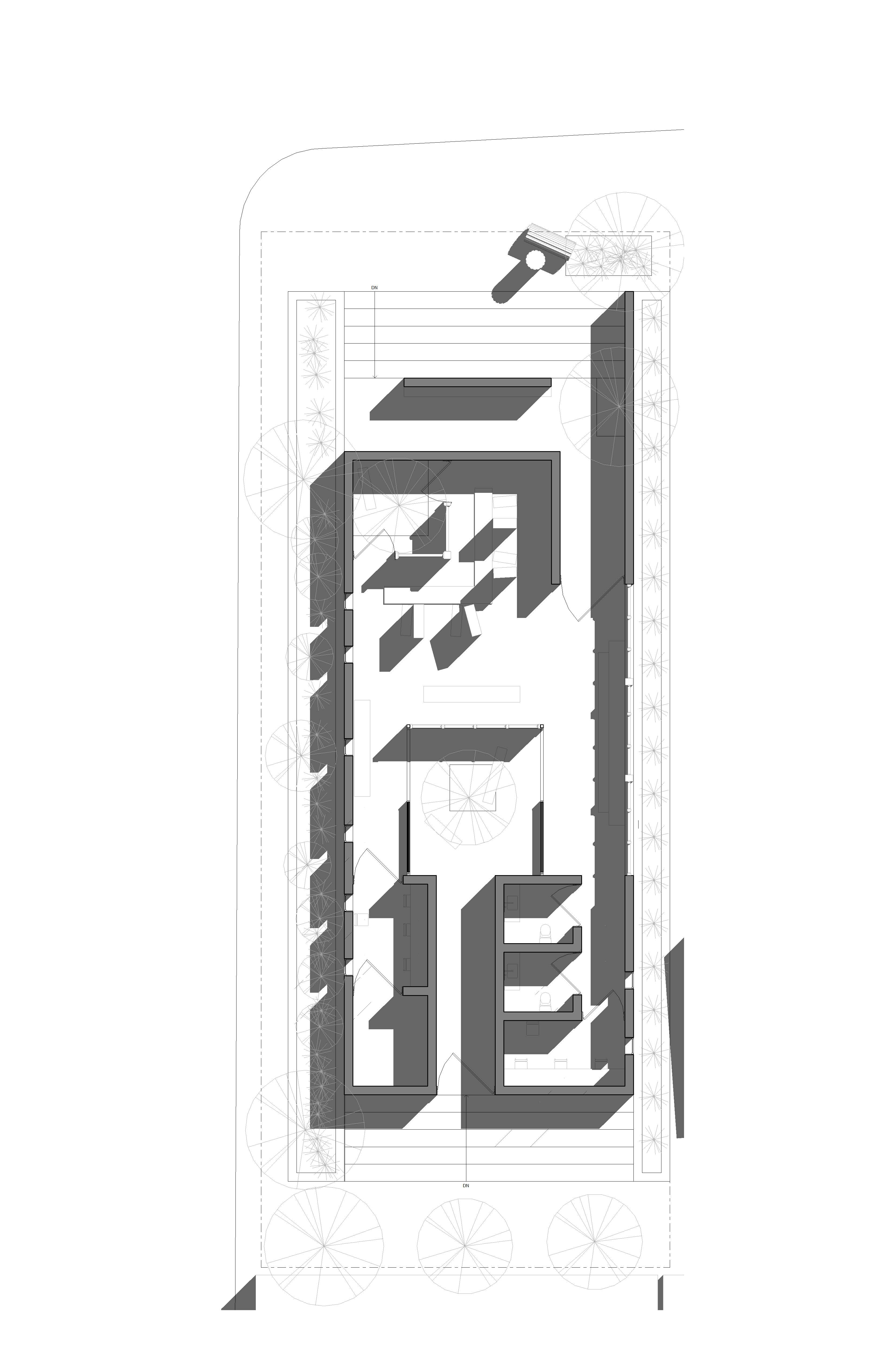
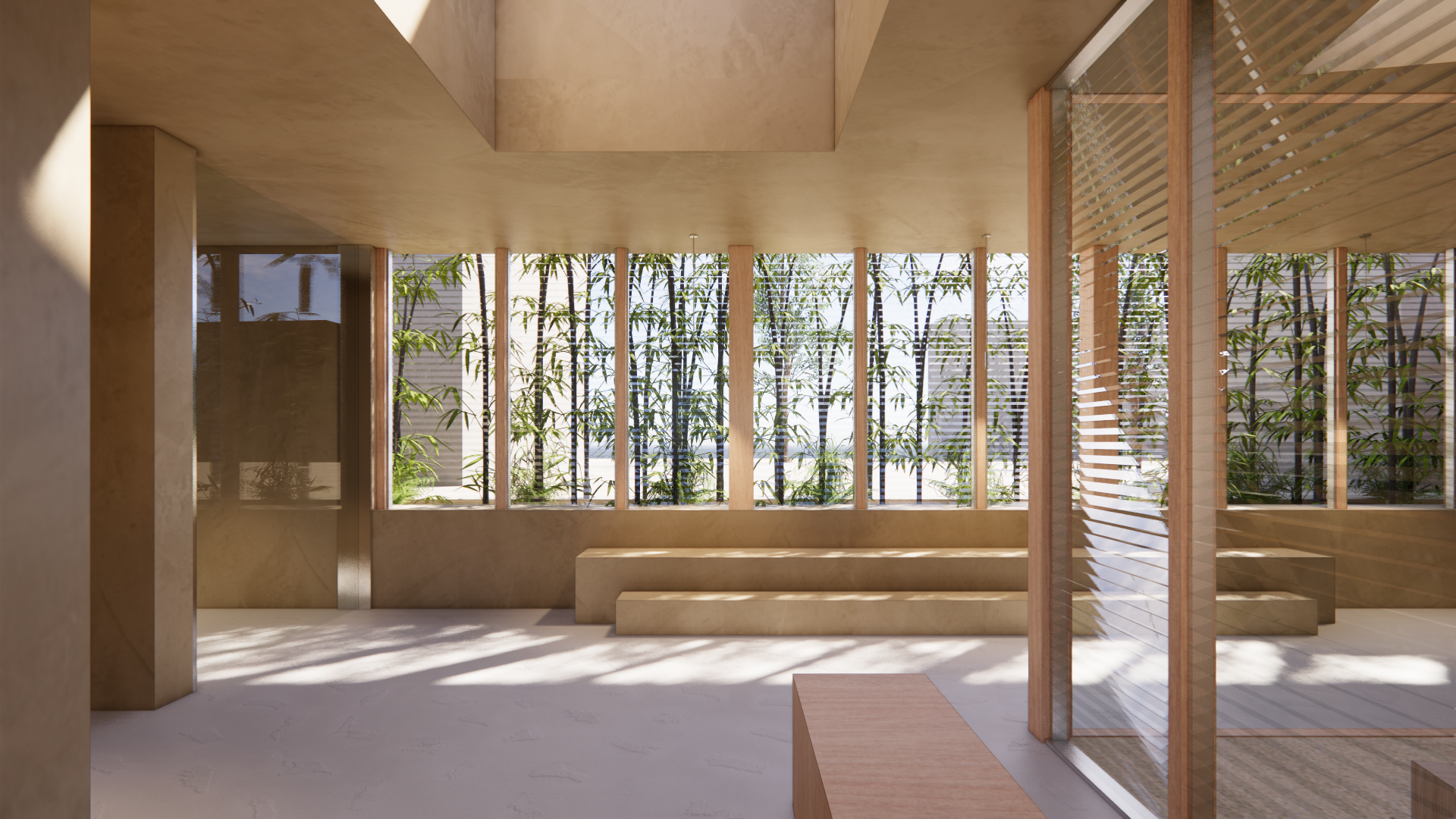
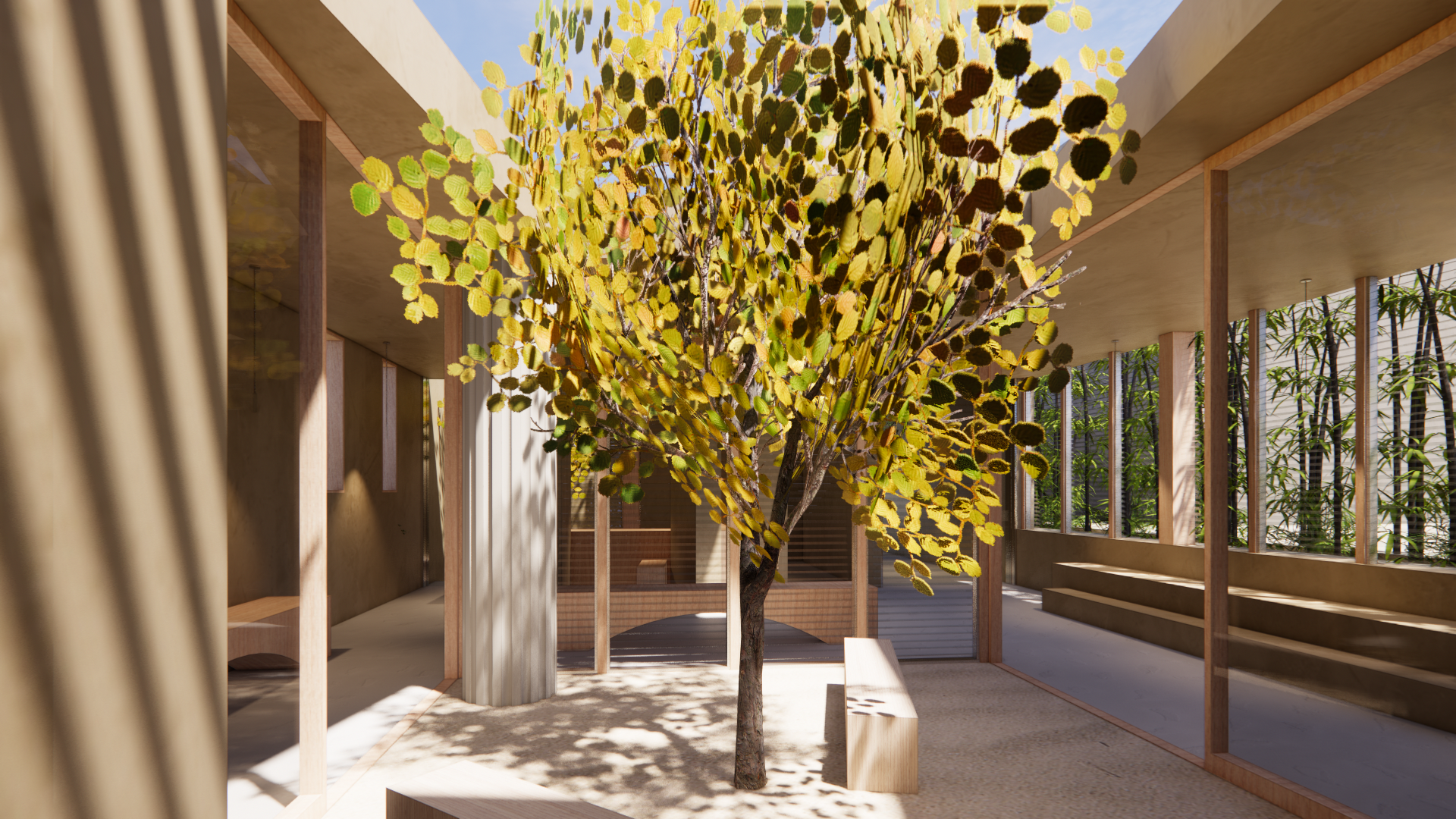

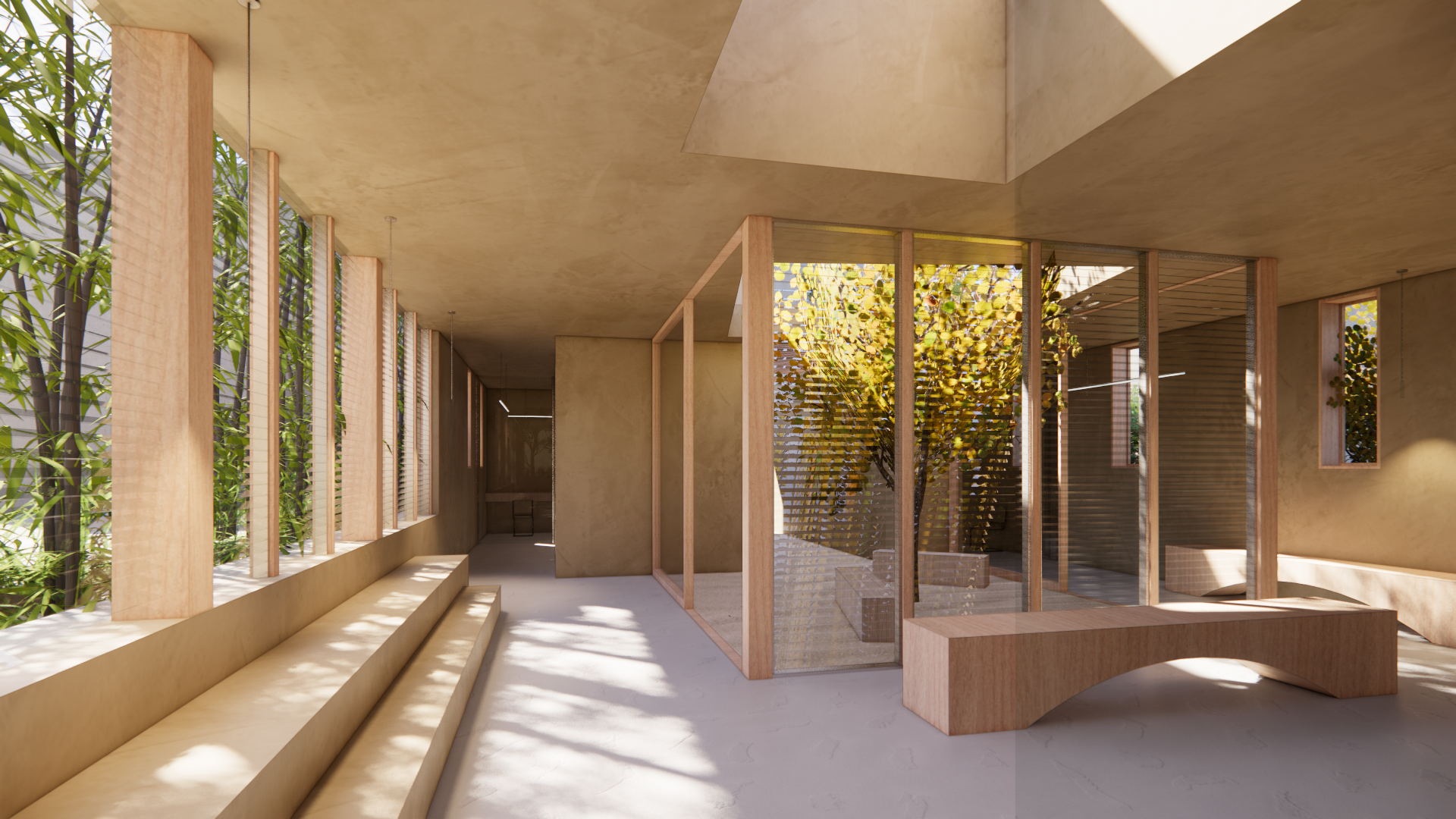
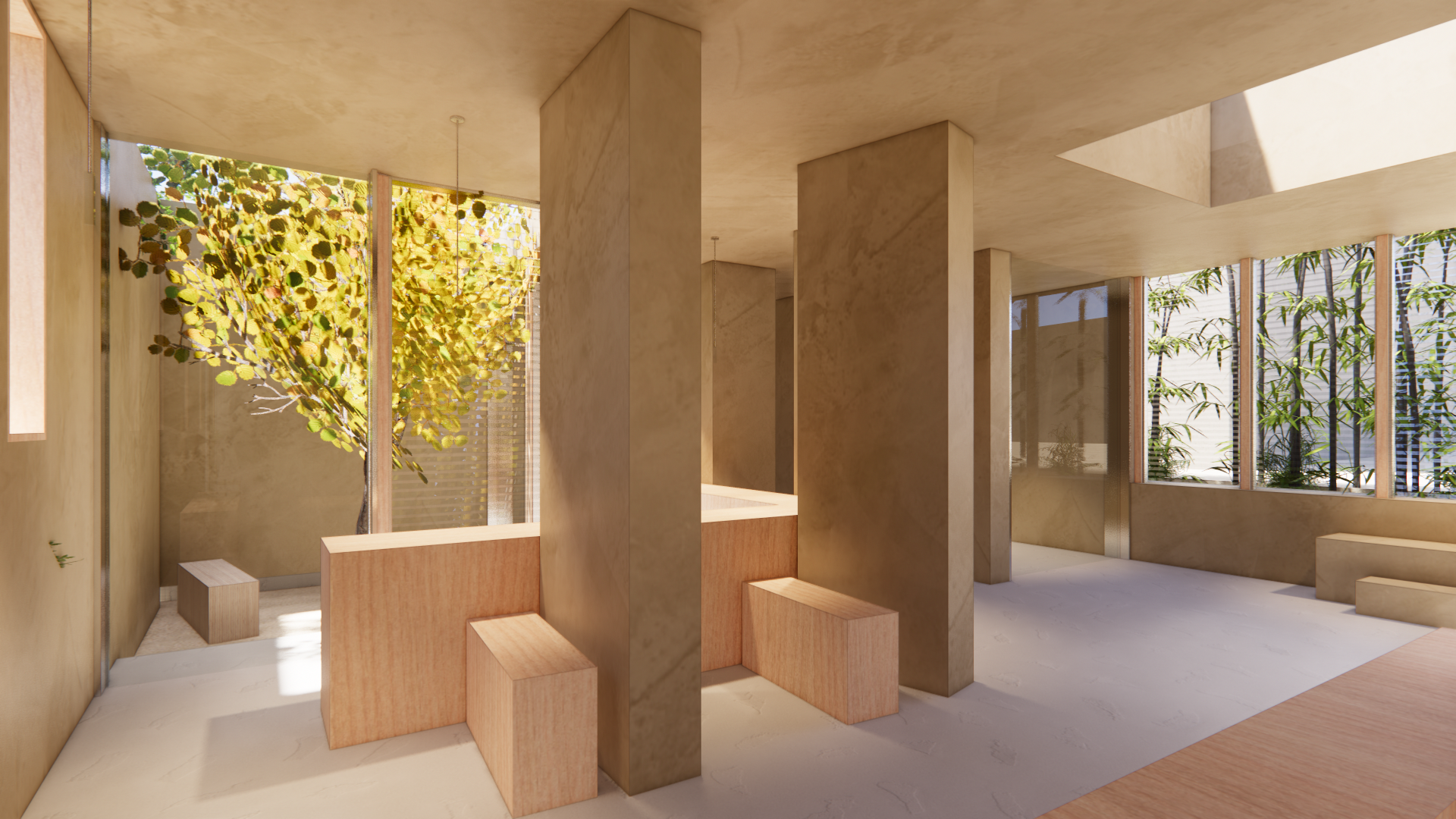


At the same time, the brief asks participants to consider the ongoing opioid crisis in the United States, and how architecture can be used to solve problems both for the individual and for society as a whole.
The goal of the competition is to present an idea that combines opioid treatment through methadone distribution with ways to combat stigma relating to drug dependency, located at a site in Venice, Los Angeles.
The fact that the built environment has an emotional impact on people also means that architecture can be used as a tool to influence people’s behavior. Although nothing new, it is an aspect of architecture that isn’t always explicitly considered by designers – much in the same way one might not always reflect on the relation our surroundings have with the way we think and feel. Furthermore, it’s more likely that someone’s home has been designed with emotional impact in mind than, say a factory – but nonetheless, they both have an effect on people in their vicinity.
Combo Competitions wants to explore the subject further by asking participants to actively use it as a design tool.
-Competition Brief/Introduction
